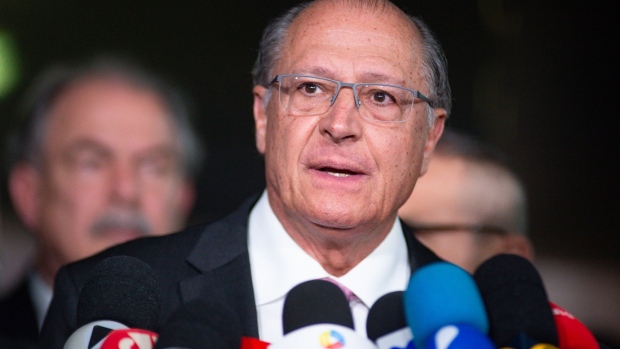Mar 21, 2023
Lula’s Team Vows Credible Budget After Clashing on Fiscal Plan
, Bloomberg News

(Bloomberg) -- President Luiz Inacio Lula da Silva’s economic team sought to assure anxious investors that Brazil’s new fiscal framework would ease concerns over public spending, but revealed scant details of the plan that cabinet members are still debating.
“It’s an intelligent, well-done measure and that’s going to give security on the fiscal issue,” Vice President Geraldo Alckmin said Monday at an event held at the BNDES development bank headquarters in Rio de Janeiro.
He added that the proposal would take into account Brazil’s debt curve, combined with measures to control spending, but provided no further specifics on its execution.
Investors and economists are eagerly awaiting the release of the Lula administration’s proposal to replace Brazil’s so-called spending cap, a rule that limits the growth of public expenditures to the inflation rate. The leftist leader is looking to boost government outlays to spur the economy, but concerns about swelling debts are raising inflation expectations and, in turn, keeping borrowing costs expensive for consumers and businesses alike.
Read More: Lula’s Cabinet Members Clash Over Plan to Shore Up Budget
Cabinet members have signaled that an announcement could come as soon as this week, but haven’t been able to agree on a proposal yet. They spent much of Monday reassuring that the plan would help lower the key interest rate, now at a six-year high of 13.75%.
“We believe in the common sense that we’re going to have a reduction in interest rates,” Alckmin told reporters after his speech.
Since returning to the nation’s top job on Jan. 1, Lula and his allies have repeatedly taken aim at the central bank’s policies, which they say are crimping growth and investment. Despite the criticism, policymakers are expected to hold the benchmark Selic at its current level at the bank’s rate-decision meeting this week.
Read More: Stiglitz Joins Lula in Slamming Brazil’s Interest Rate Levels
Gradual Adjustment
The proposal’s main architect, Finance Minister Fernando Haddad, said Monday he hoped to unveil the plan before Lula travels to China on March 25, but indicated that negotiations are still ongoing.
Brazil’s gross debt currently stands at 73.1% of gross domestic product and would reach around 80% of GDP by 2026, the Treasury estimated earlier this year. At the BNDES event on Monday, Nelson Barbosa, a former finance minister and now the bank’s planning and project structuring director, said such levels are well above many of the nation’s emerging-market peers.
Even so, any new fiscal rule would have to be applied gradually and could take as many as four years to implement, he said.
“The challenge is to distribute the adjustment across all agents of the economy and over time,” Barbosa said. “Do it too quickly, the economy collapses and the adjustment does not come.”
--With assistance from Bruna Lessa.
©2023 Bloomberg L.P.







